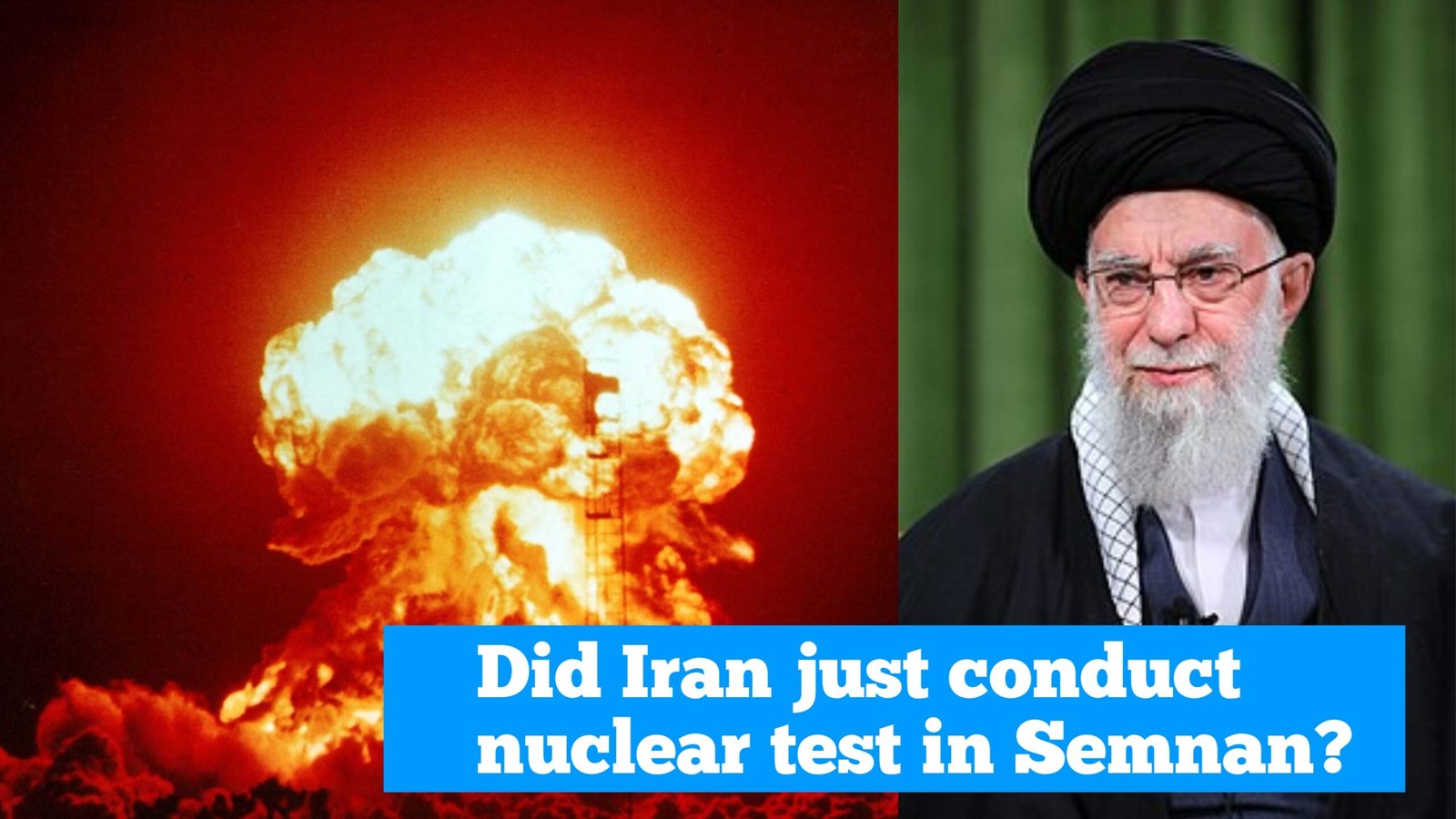Recent reports have sparked global speculation that Iran may have conducted a nuclear test in Semnan, a region east of Tehran, following the detection of seismic activity there. Although the rumors remain unverified, the situation has raised significant concerns given the geopolitical tensions involving Iran’s nuclear ambitions. In this article, we will explore the origins of the speculation, what we know so far, and the potential implications if Iran were indeed moving toward nuclear testing.
Origins of the Speculation
On October 2024, an earthquake or tremor was detected in the Semnan region of Iran, sparking claims across various media outlets and social networks that the seismic activity might have been the result of an underground nuclear test. Such theories quickly gained traction because seismic waves from nuclear tests can mimic the effects of natural earthquakes, as has been seen in other countries conducting nuclear tests.
However, no authoritative international bodies, such as the Comprehensive Nuclear-Test-Ban Treaty Organization (CTBTO), have confirmed these claims. Iran, too, has denied any involvement in nuclear testing, which suggests that the event may be linked to natural seismic activity. But given Iran’s advanced nuclear program and its strained relations with the West and Israel, the speculation continues to stir anxiety across the international community.
Iran’s Nuclear Program: Context and Concerns
Iran’s nuclear ambitions have been under scrutiny for decades, especially following the U.S. withdrawal from the Joint Comprehensive Plan of Action (JCPOA) in 2018. Since then, Iran has expanded its uranium enrichment activities, significantly increasing its stockpile of enriched uranium to levels much higher than what is allowed under the JCPOA.
While Iranian officials maintain that their nuclear program is for peaceful purposes, tensions in the region, particularly with Israel, have escalated the stakes. There have been past instances where Israel and the U.S. reportedly carried out cyberattacks and sabotage against Iran’s nuclear facilities to prevent the development of nuclear weapons.
Moreover, recent conflicts, including the October 2024 missile strikes between Iran and Israel, have heightened suspicions that Tehran might be considering weaponizing its nuclear program to deter future threats. While Tehran has denied any plans to develop nuclear weapons, its growing uranium enrichment capabilities and its underground facilities at Fordow and Natanz leave room for concern among its adversaries.
What Does Seismic Evidence Say?
One of the key indicators of underground nuclear testing is the detection of specific types of seismic waves, such as those that were observed during past nuclear tests by countries like North Korea. These seismic signatures are distinguishable from natural earthquakes, and scientists worldwide, especially through the CTBTO, monitor seismic activity for signs of such tests.
In the case of Semnan, the evidence so far is inconclusive. The seismic activity detected could well be a natural earthquake, as Iran lies in a seismically active region. However, due to the opaque nature of Iran’s nuclear activities and the high-security zones around sites like Semnan, experts are calling for more detailed seismic analysis to rule out the possibility of a nuclear explosion.
International Reactions and Potential Consequences
The unverified claims of a nuclear test in Semnan have caused a ripple effect internationally. If proven true, it would represent a major violation of international treaties, such as the Treaty on the Non-Proliferation of Nuclear Weapons (NPT), to which Iran is a signatory. It would also escalate tensions with the West and Israel to unprecedented levels, potentially triggering military or diplomatic retaliation.
Already, the U.S. and its allies have issued strong warnings regarding Iran’s nuclear capabilities. Israel, in particular, has a vested interest in preventing Iran from obtaining a nuclear weapon, given the existential threat it perceives from Tehran’s leadership. Israeli Prime Minister Benjamin Netanyahu has repeatedly vowed to take military action if necessary to prevent Iran from becoming a nuclear-armed state.
Should Iran conduct a nuclear test, it would likely lead to an escalation of sanctions, further isolation of Tehran from the international community, and possibly military strikes against its nuclear infrastructure. The consequences would not only affect Iran but would also have far-reaching implications for the entire Middle East, with the potential for a new arms race in the region.
Iran’s Official Response
Despite these alarming possibilities, Iran has remained steadfast in its official position. Iranian leaders have repeatedly stated that they do not seek to build nuclear weapons, with Supreme Leader Ayatollah Ali Khamenei reiterating that nuclear arms are forbidden under Islamic law. Tehran has consistently argued that its nuclear program is for energy and medical purposes, despite growing international skepticism.
In response to the latest rumors, Iranian officials have denied any nuclear test in Semnan, dismissing the reports as part of a broader campaign to discredit Iran on the world stage. Nevertheless, the ongoing tensions with Israel, its allies, and concerns over Iran’s uranium enrichment activities make such denials less convincing to some observers.
Conclusion
While there is no solid evidence yet to confirm that Iran conducted a nuclear test in Semnan, the mere possibility has intensified international concerns over Iran’s nuclear program. The seismic event in Semnan could very well be natural, but given the secretive nature of Iran’s nuclear activities, it will take thorough investigation and transparency to resolve the matter.
If the claims are proven, Iran will face severe consequences on the global stage, risking further isolation and conflict with both regional and international powers. For now, the world watches closely, waiting for verification and hoping to avoid another flashpoint in an already volatile region.
In the meantime, it is crucial for international organizations like the IAEA and CTBTO to closely monitor Iran’s nuclear activities and provide clear evidence to either confirm or dismiss the ongoing speculation.
